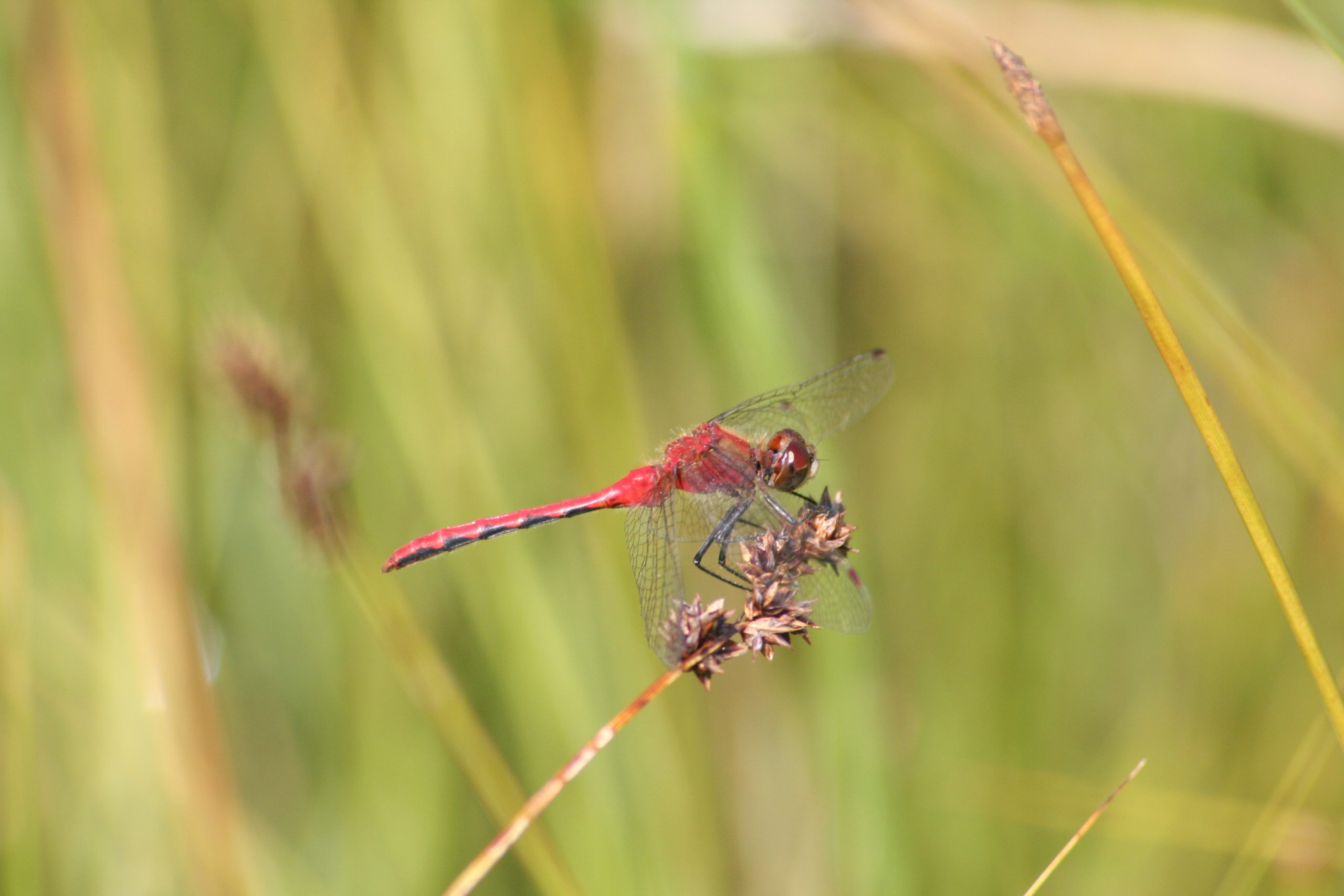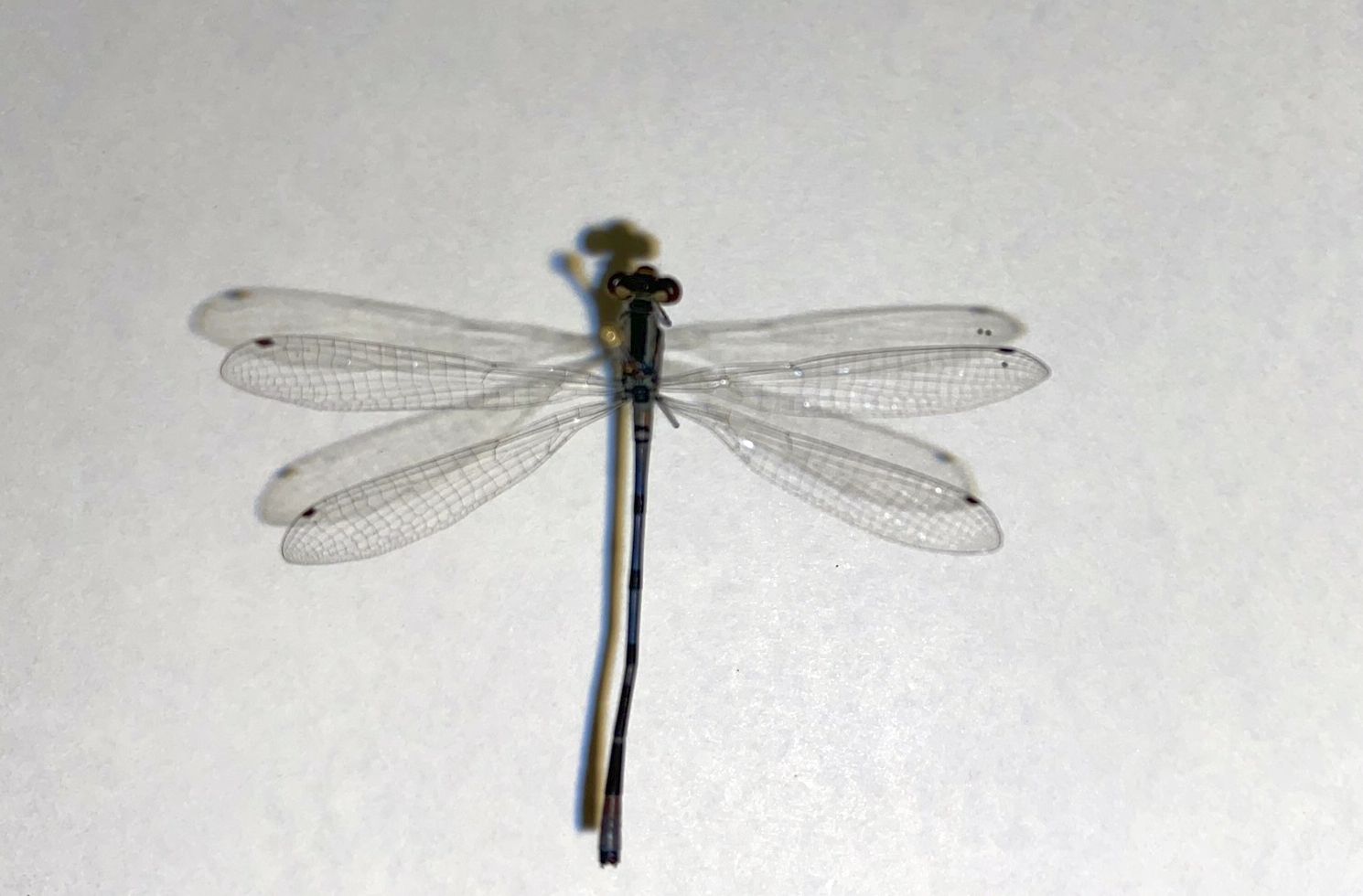35 Paleoptera: Odonata
Odonata
The Odonata (“odon” = “tooth”) includes about 5000-6000 species, with 87 species in 10 families known to occur in BC. The order is, in most literature, divided into two suborders, the Anisoptera (dragonflies; “aniso” = “unequal”) and the Zygoptera (damselflies; “zygo” = “joined together”). These names come from the relative size and shape of the front and hind wings. The Anisoptera have larger hindwings and smaller forewings, while the two pairs of wings are a similar shape and size in the Zygoptera. The two suborders also differ in body shape and size, in their ability to hold the wings parallel to the body at rest, and in various characteristics of the immature stages.
The entire order is carnivorous, both as immatures and adults. Adults catch prey in flight, and are adept, agile flyers. They also have large eyes, making them difficult to catch with an insect net! The immature stages are aquatic, so adults are often found near water bodies. They are strong fliers, though, and can disperse long distances.
Development in the Odonata is hemimetabolous. Mating occurs in flight, and the male may clasp the female for some time to prevent multiple matings. The spermatophore is placed in a secondary reproductive organ either before (Anisoptera) or after (Zygoptera) a female is found. Nymphs, or naiads, are aquatic, lie-in-wait predators. They have an extensible labium that is specialized for catching prey. Nymphs must be preserved in ethanol, but are relatively easy to identify to family using characteristics of the labium, among other features. Zygoptera nymphs tend to be slenderer than Anisoptera nymphs. Zygoptera also have three leaf-like, external gills at the tip of the abdomen. Anisoptera are stouter, and have internal gills held inside the rectum. When disturbed they take water into the rectum and expel it forcefully, to “jet” away from a potential predator.
To identify adult Odonata, you will have to use features of the wings and wing veins. Your key will refer to “triangles” in the wing veins of Anisoptera. These patterns are outlined below, with the left figure (Aeshnidae) showing triangles that are equal in the forewing and hindwing, and the right figure (Libellulidae) showing triangles that are not equal.

In the Zygoptera, you will need to determine where a certain wing vein in the forewing branches relative to the nodus. The nodus is the dark spot along the wing margin indicated by the arrows in the following photos. In the left figure (Lestidae), the branch occurs before, or basal to, the nodus. In the right figure (Coenagrionidae), the branch occurs directly below the nodus.

Following are some photos of Anisoptera (left) and Zygoptera (right), both adults (top) and nymphs (bottom). Note the formidable labium on each nymph!






Feedback/Errata